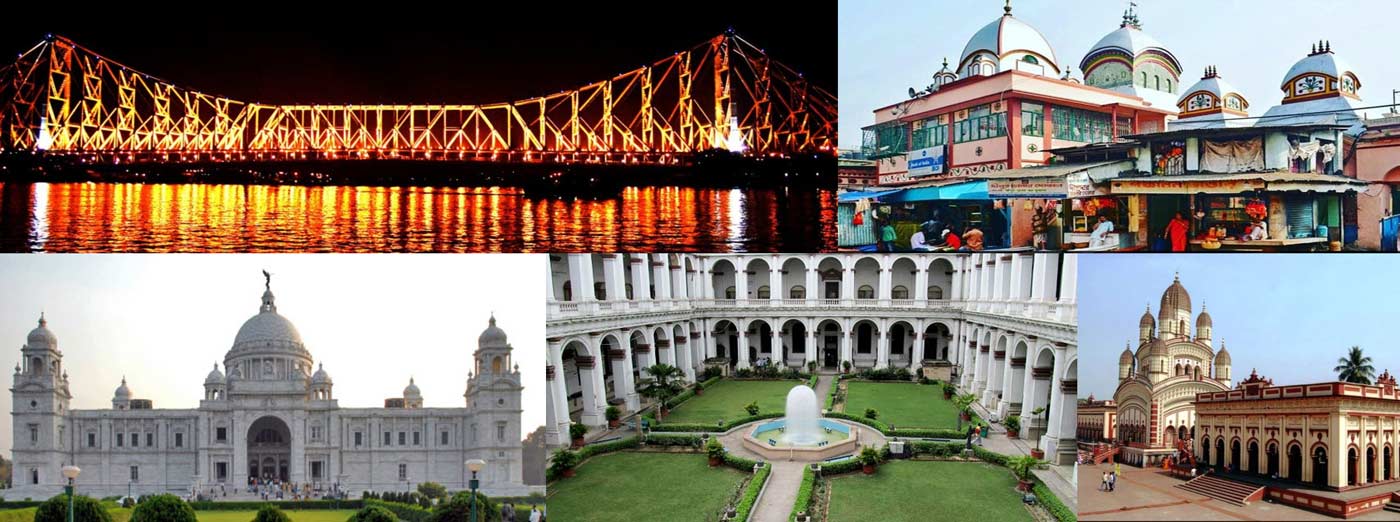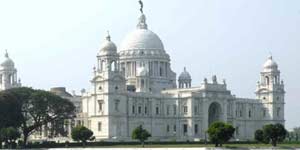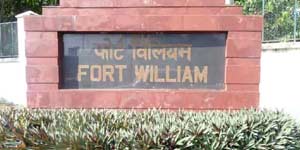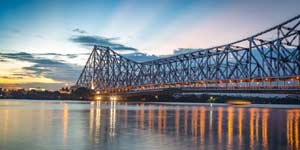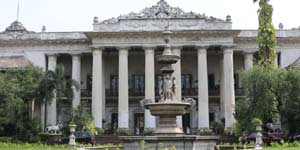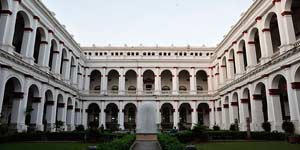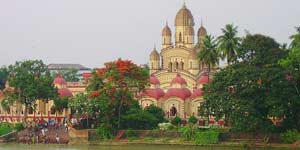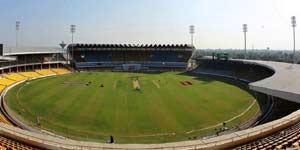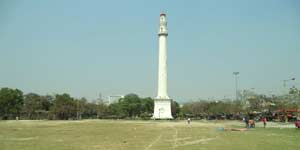
Howrah Bridge
The Howrah Bridge / Rabindra Setu is a cantilever bridge with a suspended span over the Hooghly River in West Bengal, India. Commissioned in 1943, the bridge was originally named the New Howrah Bridge, because it replaced a pontoon bridge at the same location linking the two cities of Howrah and Kolkata (Calcutta). On 14 June 1965 it was renamed Rabindra Setu, after the great Bengali poet Rabindranath Tagore, who was the first Indian and Asian Nobel laureate. It is still popularly known as the Howrah Bridge.
The bridge on the Hooghly River is a famous symbol of Kolkata and West Bengal. It weathers the storms of the Bay of Bengal region, carrying a daily traffic of approximately 100,000 vehicles and possibly more than 150,000 pedestrians, easily making it the busiest cantilever bridge in the world. The third-longest cantilever bridge at the time of its construction, the Howrah Bridge is the sixth-longest bridge of its type in the world.
In the view of the increasing traffic across the Hooghly river, a committee was appointed in 1855-56 to review alternatives for constructing a bridge across it. The plan was shelved in 1859-60, to be revived in 1868, when it was decided that a bridge should be constructed and a newly appointed trust vested to manage it. The Calcutta Port Trust was founded in 1870, and the Legislative department of the then Government of Bengal passed the Howrah Bridge Act in the year 1871 under the Bengal Act IX of 1871, empowering the Lieutenant-Governor to have the bridge constructed with Government capital under the aegis of the Port Commissioners.
Eventually a contract was signed with Sir Bradford Leslie to construct a pontoon bridge. Way back in 1860 it was felt that Howrah and Calcutta must be linked by a bridge. So a pontoon bridge was ordered from England and was assembled in Calcutta by the Port Trust. The bridge was considerably damaged by the great cyclone on 20 March 1874. A steamer named Egeria broke from her moorings and collided head-on with the bridge, sinking three pontoons and damaging nearly 200 feet of the bridge. The bridge was completed in 1874, at a total cost of 2.2 million, and opened to traffic on 17 October of that year. The bridge was then 1528 ft. long and 62 ft. wide, with 7-foot wide pavements on either side. Initially the bridge was periodically unfastened to allow steamers and other marine vehicles to pass through. Before 1906, the bridge used to be undone for the passage of vessels during daytime only. Since June of that year it started opening at night for all vessels except ocean steamers, which were required to pass through during daytime. From 19 August 1879, the bridge was illuminated by electric lamp-posts, powered by the dynamo at the Mullick Ghat Pumping Station. As the bridge could not handle the rapidly increasing load, the Port Commissioners started planning in 1905 for a new improved bridge.
The Chief Engineer of the Port Trust, Mr. J. McGlashan, wanted to replace the pontoon bridge, with a permanent structure, as the present bridge interfered with North/South river traffic. Work could not be started as World War I (1914-1918) broke out. Then in 1926 a commission under the Chairmanship of Sir R. N. Mukherjee recommended a suspension bridge of a particular type to be built across the River Hoogly. The bridge was designed by one Mr.Walton of M/s Rendel, Palmer & Triton. The order for construction and erection was placed on M/s.Cleveland Bridge & Engineering Company in 1939. Again World War II (1939-1945 ) intervened. All the steel that was to come from England were diverted for war effort in Europe. Out of 26,000 tons of steel, that was required for the bridge, only 3000 tons were supplied from England. In spite of the Japanese threat the then ( British ) Government of India pressed on with the construction. Tata Steel were asked to supply the remaining 23,000 tons of high tension steel. The Tatas developed the quality of steel required for the bridge and called it Tiscom. The entire 23,000 tons was supplied in time. The fabrication and erection work was awarded to a local engineering firm of Howrah. It was the famous Braithwaite Burn & Jessop Construction Company Limited (BBJ).
Kolkata Tourist Attractions
Kolkata Tourist Attractions, the City of Joy, is one of the oldest and most loved cities in India. Apart from a rich history and culture, there are also a number of amazing places to visit in Kolkata. No matter what type of traveller you are, no matter where you come from, it is hard not to fall in love with Kolkata. It is a city with vibrant and colourful lanes, and you can feel the pulse as you meander through these lanes. Kolkata is not merely a city. It is an emotion that needs to be felt. It is a canvas coloured with every shade. And, if you are here, you can absolutely not miss these 21 amazing places to visit in Kolkata.
 +91 9799050299
+91 9799050299 